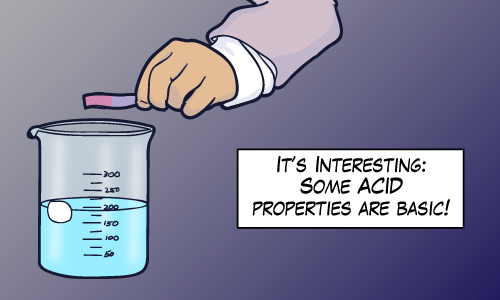ACID Properties By (Counter) Example
- Part Zero: ACID Properties
- Part One: Atomic
- Part Two: Consistent
- Part Three: Isolation
- Part Four: Durable
So I’m introducing a small series about ACID properties as it applies to databases. (For other acid properties, talk to a chemist or Timothy Leary).

When talking about databases, ACID is an acronym that stands for Atomic, Consistent, Isolation and Durable. These are important properties of a database system’s architecture. Specifically these properties refer to how database transactions are designed.
In fact this stuff is important in any transaction processing system (TPS). These systems (not just database systems) use a server-client architecture and they first became popular in the 1960s. These systems are successful because they allow multiple clients to modify and share data concurrently all while enforcing data integrity! Not too shabby.
So most servers (including database servers) were built with this architecture in mind. It’s interesting that NoSQL databases don’t attempt to provide ACID transactions. Each of these NoSQL databases ignore one or more of these properties and attempt to offer something else in its place (but that’s a story for another day).
With SQL Server, these properties are enforced by default. But as it happens, you can relax these ACID properties in SQL Server if you want. We’ll see that it turns out to be easy (maybe too easy?) to write SQL that ignores some of these properties. The hope is that after reading this series, you’ll
- be aware of the properties
- understand why database transactions behave the way they do,
- and be aware of any consequences if you’re tempted to give up any of these properties.
How This Series Is Organized
So I started this series as a single blog post, but it was getting a bit long for a single article. I wanted to come up with some examples (and counterexamples) other than the too common example of a money transfer between two bank accounts.
What you’ll see in this series is
- a description of each ACID property.
- A bit about how each property is handled in SQL Server,
- An example from real life (but not necessarily an I.T. example!)
- A counterexample from real life (but again, not necessarily an I.T. example!)
Stay tuned!





[…] ACID Properties By Example (And Counterexample) Part Zero – Michael J. Swart (Blog|Twitter) kicking off his new post series on ACID, in his characteristic unique and creative style. […]
Pingback by Something for the Weekend – SQL Server Links 22/07/11 — July 22, 2011 @ 7:36 am
understandable acid properties by real life eg.
Comment by sukanya — September 22, 2013 @ 7:33 am
Excited to know with real examples…
Moving towards next page…>>>>>>>>
Comment by Aditya C — November 20, 2013 @ 11:43 pm